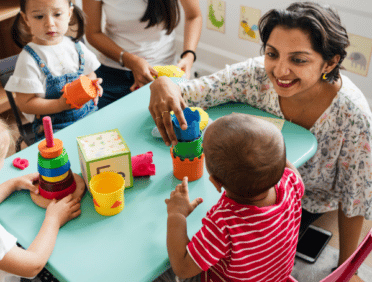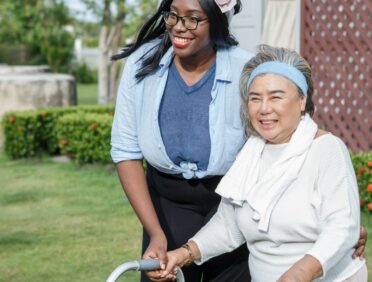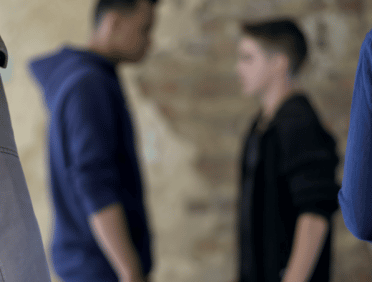Filter by
Safeguarding Child Protection in Sport: A UK Perspective
The protection of children in sports is absolutely necessary in order to facilitate the development of a secure and supportive atmosphere in which young athletes can flourish. Both the protection of children from danger and the promotion of their wellbeing are the responsibilities of sports groups in the United Kingdom, which are subject to severe procedures and extensive standards.
The safety of children in sports is a shared responsibility that calls for dedication, vigilance, and cooperation among all parties involved. Sports organisations in the United Kingdom have the ability to provide a secure, positive, and stimulating environment for all children by placing a priority on the well-being of young athletes.
Understanding Safeguarding in Sport
What is Safeguarding?
When it comes to sports, safeguarding refers to the preventative steps that are taken to protect children and people who are vulnerable from being abused, exploited, or otherwise harmed within the context of sporting environments. Among these are the formulation of policies, the execution of practices, and the cultivation of an atmosphere in which the well-being and safety of individuals are given priority.
Why is Safeguarding Important?
The protection of children and young people is of the utmost importance since they are especially susceptible to becoming victims of a variety of forms of abuse in sports environments. A successful safeguarding strategy ensures that individuals do not have to worry about being hurt or exploited while they participate in sports. This is accomplished by ensuring that sports provide positive benefits on a physical, emotional, and social level.
Key Principles of Safeguarding Children in Sport
Child-Centred Approach
Children’s needs and welfare must be at the forefront of all attempts to protect them, and the interests of the sport should take a back seat to the care and protection of children.
Prevention and Education
The importance of preventing abuse through education and training cannot be overstated. Coaches, workers, and volunteers can better understand their obligations and detect the signs of abuse if they receive regular training on safeguarding.
Clear Reporting Procedures
The establishment of reporting processes that are both clear and easily accessible guarantees that any concerns regarding the safety of a child can be expressed and addressed in a timely manner.
Collaboration and Partnership
The efficiency of safeguarding measures is improved through collaboration with external organisations, such as local authorities and child protection agencies, which also guarantees that children receive complete care.
Legal Framework Governing Safeguarding in the UK
Key Legislation
There are a number of significant pieces of legislation in the United Kingdom that support the protection of athletes, including the following:
There is a mandate for the protection and promotion of children’s welfare under the Children Act of 1989 and 2004.
A framework for screening and excluding individuals who are not eligible to work with children is established under the Safeguarding Vulnerable Groups Act of 2006.
The provision of statutory guidelines on inter-agency cooperation to protect children is included in the Working Together to Safeguard Children 2018 document.
Every person who works with children must abide by the Protection of Freedoms Act of 2012, according to the Disclosure and Barring Service (DBS).
Roles and Responsibilities in Safeguarding
Designated Safeguarding Officers
The designated safeguarding officers, also known as DSOs, are responsible for implementing safeguarding policies, providing training, and acting as the primary point of contact for concerns within sports organisations. They play an important role in all of these areas.
Coaches and Volunteers
All coaches, staff members, and volunteers must be aware of and adhere to the safeguarding procedures. Relevant training must be completed, and vigilance must be maintained about the identification and reporting of issues.
National Governing Bodies
Over the course of their respective sports, national governing bodies (NGBs) are responsible for establishing and enforcing safeguarding standards, providing resources and training, and monitoring compliance.
Creating a Safe Environment
Comprehensive Policies
Protective policies for sports clubs need to be developed, reviewed on a regular basis, and kept up-to-date in order to comply with the most recent legislation and best practices.
Regular Training
Continuous training in safeguarding guarantees that all members of the organisation are aware of the most recent practices and are able to identify the symptoms of abuse.
Open Communication
The maintenance of open communication with parents, children, and staff members helps to cultivate a culture of trust and transparency, which in turn encourages families to raise any problems they may have.
Frequently Asked Questions (FAQs)
When we talk about safeguarding in sports, we are referring to the policies and procedures that are put in place to prevent children, young people, and adults who are vulnerable from being abused, hurt, or neglected within the context of a sporting event. In order to accomplish this, it is necessary to establish a secure and welcoming environment in which people are able to take part in sporting activities without fear of being exploited, bullied, or discriminated against.
A wide variety of practices are included in the concept of safeguarding. These practices include the formation of codes of behaviour, the performance of comprehensive background checks on coaches and volunteers, the provision of consistent training on safeguarding issues, and the construction of clear protocols for reporting and responding to concerns.
For a number of reasons, safeguarding is extremely important in young sports:
Assuring that children and young people are protected from physical, emotional, and sexual abuse, as well as neglect, is what we mean when we talk about protection without harm.
When young people are able to participate in sporting activities in a secure setting, their physical and mental well-being is improved, and they are able to take pleasure in and reap the benefits of these activities.
A greater number of children are encouraged to take part in sports as a result of effective safeguarding procedures, which foster trust and confidence among parents, guardians, and the community as a whole.
Sports organisations have a legal and ethical commitment to safeguard young participants from harm. This obligation extends to both the legal and ethical spheres. As a result of failing to comply, the organisation may face legal repercussions as well as damage to its reputation.
A safe environment is beneficial to the constructive development of young people because it encourages the development of qualities such as cohesiveness, self-control, and resiliency on their part.
Among the most important guidelines for protecting children in sports are the following:
An approach that places the needs and well-being of children at the forefront of all decision-making processes is known as a child-centred approach.
Preventative measures include the implementation of robust recruitment practices and safeguarding training, among other preventative measures, in order to prevent abuse and injury.
The establishment of transparent protocols for the handling of concerns, complaints, or incidences of abuse or harm is an essential component of protection.
Empowerment refers to the process of ensuring that children are aware of their rights and are able to express themselves in situations where they feel unsafe or uncomfortable.
In the context of safeguarding policies and practices, maintaining open and clear communication with children, parents, and guardians is an essential component of transparency.
Accountability refers to the practice of holding all individuals within an organisation accountable for following the policies and procedures that are in place to protect the group.
As part of continuous improvement, safeguarding policies should be reviewed and updated on a regular basis to ensure that they are in line with best practices and regulatory requirements.
All individuals active in sports organisations bear the responsibility for ensuring the safety of their members; however, certain jobs include the following:
A designated safeguarding lead, often known as a DSL, is an individual who is tasked with the responsibility of supervising safeguarding policies and procedures, addressing complaints, and ensuring compliance with legal obligations.
Volunteers and coaches are accountable for adhering to the appropriate safeguarding standards, communicating any concerns they may have, and establishing a secure atmosphere for the participants.
The management and governance of the organisation are responsible for ensuring that safeguarding is ingrained in the culture of the organisation and that adequate resources are allotted for the implementation of safeguarding initiatives.
It is important for parents and guardians to show their support for the organisation’s work to protect children and to voice any concerns they may have.
Participants are expected to be informed of their rights and to be able to report any problems that may arise.
A number of articles of legislation in the United Kingdom govern the protection of athletes:
The Children Act of 1989 and that of 2004 provide a framework for the protection of children and young people.
An act that was passed in 2006 called the Safeguarding Vulnerable Groups Act establishes the foundation for the screening and exclusion of individuals who deal with vulnerable adults and children.
Regulatory guidance on inter-agency collaboration to protect and advance the welfare of children is outlined in the Working Together to Safeguard Children (2018) document.
DBS checks are introduced as a result of the Protection of Freedoms Act of 2012, which was passed in 2012.
The Sexual Offences Act of 2003 addresses several sexual offences, especially those against minors.
Children and young people are protected from discrimination and harassment thanks to the Equality Act of 2010, which was passed in 2010.
Sports clubs can guarantee that they are in compliance with legislation regarding protection by:
The process of developing a safeguarding policy involves the creation of a comprehensive safeguarding policy that is in accordance with the requirements of the law and best practices.
The process of conducting background checks involves doing DBS checks on all employees and volunteers who work with vulnerable individuals and children.
Providing Training: Provide regular training on safeguarding to all of the staff and volunteers in order to ensure that they are aware of their obligations and how to respond to concerns.
Designating a safeguarding lead to oversee and handle safeguarding issues within the club is referred to as appointing a district safeguarding lead (DSL).
Putting in place reporting processes involves establishing procedures that are both understandable and easily available for reporting and reacting to issues with safeguarding.
Maintaining communication with parents and guardians, including informing them of the club’s policies regarding child protection and encouraging their participation in the club’s efforts to protect children,.
Reviewing Policies on a Regular Basis: It is important to review and update safeguarding policies on a regular basis to ensure that they continue to be contemporary and effective.
Among the indicators of abuse or neglect in a sporting context are the following:
Signs of neglect, such as poor hygiene or incorrect attire, are examples of physical indicators. These include bruises, wounds, or injuries that cannot be explained.
Behavioural Alterations: Sudden changes in behaviour, such as becoming withdrawn, hostile, or nervous; unwillingness to attend training sessions; a lack of interest in attending training sessions.
An excessive fear of particular people, a lack of confidence, or a low sense of self-worth can all be indicators of emotional distress.
Disclosure: A child may admit that their parents or other adults are ignoring or abusing them.
Inappropriate relationships are interactions between a child and an adult that are not typical, such as when the child receives an excessive amount of attention or is favoured.
A consistent absence from sessions or an appearance of hunger, exhaustion, or unkemptness are all indicators of neglect.
When you have reason to believe that a kid is being mistreated in a sporting environment, you should:
Stay calm and comfort the child. If the child comes forward to tell you about abuse, you should remain calm, pay close attention to what they have to say, and comfort them that they have done the right thing by coming forward.
Make a note of the information: Take notes on what the child has shared with you, do so as much as possible using their own words, and make sure to add any observations you have made on changes in behaviour or physical manifestations.
Please send us your concerns. It is imperative that you immediately communicate your concerns to the designated safeguarding lead (DSL) within the various sports organisations. In the event that there is no DSL or if the DSL is involved, you should get in touch with the children’s social care services of the local authority or the police.
Assist in the Procedures: Be sure to follow the protection protocols established by the organisation when it comes to reporting and handling claims of abuse.
Avoid conducting an investigation: Do not make any attempt to conduct an investigation on your own; instead, delegate this task to specialists who are equipped to deal with situations of this nature.
Seek Support: If you are affected by the circumstances, it is important that you seek support from a supervisor or a professional therapist.
There are a number of challenges that can prevent effective protection in sports, including the following:
It is possible that coaches, staff, and volunteers might not have a complete understanding of the safeguarding procedures, the indicators of abuse, or their responsibilities because they lack awareness.
Training that is insufficient: Staff members who receive inadequate or infrequent training on safeguarding may be ill-equipped to deal with situations in an acceptable manner.
Cultural Attitudes: In certain sporting environments, there may be a culture of silence or reluctance to report concerns. This is typically due to the fear of hurting reputations or relationships.
It is possible for organisations to be hindered in their ability to implement and maintain comprehensive safeguarding measures due to resource constraints. These constraints can include limited financial and human resources.
Procedures for Reporting That Are Complicated Individuals may be dissuaded from reporting problems if the reporting methods employed are either confusing or complicated.
Policies That Are Not Consistent Confusion and non-compliance might result from safeguarding policies that are not consistent or that are not communicated effectively.
Fear of repercussions: People may be afraid of retaliation or other adverse repercussions if they disclose concerns regarding child protection, particularly in communities that are very supportive of one another.
The safeguarding policies of sports organisations must be reviewed and updated on a yearly basis, or more frequently if the following conditions are met:
Changes to Legislation: It is necessary to make updates in order to reflect any new or updated government regulations or legislative requirements.
The evolution of best practices refers to any developments or modifications made to the protection of best practices and guidance from authorities.
occurrences Occur: Significant occurrences or issues pertaining to the protection of individuals occur, which calls for a review of the policies and procedures in place.
There is a Received Response: It is possible to identify areas for improvement based on feedback received from staff, volunteers, parents, or participants.
Changes in the structure, operations, or personnel of an organisation are examples of these types of organisational changes.
Regularly updating safeguarding policies ensures they remain relevant, effective, and aligned with current standards and legal obligations.
Coaches and staff members have access to a variety of training alternatives regarding the protection of athletes, including the following:
Courses Offered by National Governing Bodies The national governing bodies of a great number of sports provide recognised training in the area of safeguarding that is relevant to that sport.
Training for Local Authorities: Local authorities frequently offer the opportunity to participate in safeguarding training for community groups and sports organisations.
The National Society for the Prevention of Cruelty to Children (NSPCC) and UK Coaching are two examples of organisations that offer online training modules for the purpose of providing learners with flexibility.
Workshops and Seminars: Professionals who are committed to the protection of children or organisations that specialise in child protection lead workshops and seminars that are in-person.
“In-house training” refers to specialised training sessions that the organisation’s designated safeguarding lead or an outside consultant prepares and delivers.
CPD stands for continuous professional development, which refers to ongoing chances for coaches and staff to keep themselves up to date on the latest safeguarding techniques.
Training should cover recognising signs of abuse, reporting procedures, creating safe environments, and understanding legal responsibilities.
There are a number of measures that parents can take to guarantee the safety of their children while participating in sporting activities:
Inquire about the club. The club’s safeguarding policies, procedures, and reputation should be investigated. It is imperative that they have a designated safeguarding lead.
Validate the qualifications: Ensure that the coaches and staff members possess the necessary certifications, such as safeguarding training and DBS checks.
Keep in touch with the staff. It is important to foster open lines of communication with the club officials and coaches. Possess the confidence to inquire about the procedures for protecting the environment.
Participate in training sessions. Observe how the club functions and how the staff interacts with the children by participating in training sessions or contests.
Talk to your child about preventative measures: Talk to your child about how to report any concerns, as well as how to protect them and their rights.
Continue to Know: The club’s safeguarding policy, as well as any changes that may arise, should be kept up-to-date.
Parents have the ability to help guarantee that their children have a great and safe experience when participating in sports by remaining active and educated.
The following are some of the ways in which national governing bodies (NGBs) play an important role in the protection of athletes in the sphere of sports:
Standardisation: the process of establishing and promoting safeguarding standards and best practices for organisations and clubs that are affiliated with the organisation.
The provision of guidance entails the provision of resources, guidance, and support on matters pertaining to safeguarding, including the formulation and execution of policies.
Training and Education: Creating and delivering training programmes for coaches, staff, and volunteers that are relevant to the protection of children and adolescents.
The process of ensuring that linked organisations comply with safeguarding legislation and policies by means of audits, inspections, and reporting procedures is referred to as monitoring compliance.
The process of responding to concerns involves providing a structure for the reporting and management of incidents and concerns related to safeguarding.
The process of promoting awareness involves increasing understanding about the importance of safeguarding among participants, parents, and the wider sports community.
NGBs are instrumental in creating a culture of safety and accountability across their respective sports.
The following protocols must be adhered to whenever a concern regarding the protection of an individual is reported:
Be attentive and reassuring. It is important to pay attention to the person who is reporting the worry and to reassure them that they have made the appropriate decision.
Make a note of the concern: Ensure that the specifics of the problem are accurately recorded, including the date, the time, and any other pertinent information that was supplied.
Make a report to the DSL: Notify the designated safeguarding lead (DSL) within the organisation as soon as possible about the issue.
Observe the Protocols for Reporting: It is imperative that the DSL adhere to the safeguarding policies and procedures of the organisation, which may involve making contact with the local authorities or the police in the event that it is required.
Maintain the Confidentiality of: Maintain confidentiality and only disclose information to those individuals who have a legitimate need to know in order to address the issue in an acceptable manner.
Support the Individual: It is important to offer support to the person who brought up the concern and to make sure that they are kept informed about the process to the extent that it is suitable.
Record the actions that were taken. You should maintain a comprehensive record of all the measures that were taken in response to the issue, including any conversations and the results.
The observance of these procedures guarantees that problems regarding the protection of individuals are dealt with in an efficient manner and in compliance with the standards of the organisation and the law.
It is possible for sports clubs to establish a secure environment for children by putting into effect safeguarding policies, which include the formulation and enforcement of comprehensive safeguarding policies that are in accordance with legal standards and best practices.
Making sure that all of the staff and volunteers go through comprehensive DBS checks and background screenings is an important part of doing background checks.
Providing Training: Providing regular training on safeguarding to all of the staff and volunteers in order to ensure that they are aware of their obligations and possess the knowledge necessary to address issues.
Appointing a Designated Safeguarding Lead (DSL) with the responsibility of supervising and managing safeguarding issues inside the club is referred to as “designating a safeguarding lead.”
In order to foster a positive culture, it is important to encourage an open and inclusive culture in which children are made to feel appreciated and where they are safe to voice any issues they may have.
Maintaining communication with parents regarding the club’s safeguarding rules and encouraging their participation in the club’s safeguarding initiatives are both aspects of engaging with parents.
Monitoring and Evaluating: The process of routinely investigating and revising safeguarding policies and procedures in order to guarantee that they continue to be successful.
Through the implementation of these steps, sports clubs have the ability to provide a secure and encouraging atmosphere for children to participate in sports activities and reap the benefits of doing so.
The Disclosure and Barring Service (DBS) is a government organisation in the United Kingdom that is intended to assist companies in making more secure decisions regarding recruitment and to prevent individuals who are not acceptable from working with vulnerable populations, such as children. In addition to conducting background checks, the DBS is responsible for issuing certificates that contain information on an individual’s criminal history and whether or not they are prohibited from working with children or adults who are vulnerable.
When it comes to the protection of athletes, DBS checks are essential for the following reasons:
The process of ensuring that all personnel who work with children and adults who are vulnerable have been subjected to comprehensive background checks is referred to as screening coaches and volunteers.
The process of identifying risks involves locating people who have been convicted of a crime or who have other concerns that could potentially endanger children.
Assistance in meeting legal obligations pertaining to the recruitment of staff and volunteers is provided to sports organisations in order to ensure compliance with the law.
The process of ensuring parents that the club has taken the necessary precautions to protect their children is referred to as “supplying parents with confidence.”
Due to the fact that DBS checks are an essential component of safeguarding processes, they contribute to the establishment of a secure environment for athletes.
Abuse victims can receive help from sports organisations in the following ways: providing immediate support; ensuring that victims have access to quick emotional and practical support, including counselling services; and providing immediate support.
Maintaining secrecy and honouring the victims’ right to privacy throughout the entire process is an essential part of ensuring confidentiality.
Providing Victims with Safe Reporting Channels: Providing victims with open and secure channels through which they can report abuse and ensuring that their statements are heard and believed.
Taking Appropriate Action: Responding to reports of abuse in a prompt and appropriate manner, including alerting external agencies such as the police or social services where it is necessary to do so.
Creating a Supportive Environment: The process of cultivating an environment that is supportive, non-judgmental, and respectful of victims, where they feel safe and appreciated,.
The provision of information includes the provision of information and resources concerning the legal rights and support services that are available.
Monitoring and Follow-Up: The process of checking in with victims on a regular basis to verify that they continue to receive the support they require and that their concerns are being handled.
When it comes to guaranteeing the safety and well-being of all players, particularly children and individuals who are vulnerable, the designated safeguarding officer (DSO) in a sports club plays a key role. These are some of their responsibilities:
Policy Implementation: The process of developing, putting into action, and routinely reviewing the club’s policies and procedures pertaining to the protection of its members.
Both training and awareness are necessary in order to fulfil the objective of ensuring that all members, volunteers, and staff members have received the appropriate training for safeguarding and are aware of their responsibilities.
The process of reporting and responding includes acting as the initial point of contact for any concerns or complaints regarding the protection of individuals, as well as handling the process of reporting to external agencies such as the police or local authorities.
Record-keeping is the process of keeping records that are both accurate and secret of all issues, incidents, and actions taken while preserving security.
The provision of support, counsel, and direction to staff members, volunteers, parents, and participants with matters pertaining to the protection of children and adolescents.
Compliance monitoring is the process of ensuring that the club’s operations are in accordance with all applicable laws and recommendations for best practices.
Acting as the liaison between the club and external safeguarding bodies, such as national governing bodies and child protection services, is the responsibility of the liaison.
A sports club may be subject to serious ramifications, including the following, in the event that the club fails to follow the necessary procedures to ensure the safety of its members.
Legal Consequences: There is the possibility of legal action being taken against the club for failing to safeguard children and adults who are vulnerable, which may result in fines, sanctions, or even the club being shut down.
Reputational damage refers to the loss of trust and reputation within the community, which ultimately results in a reduction in member engagement and support.
A funding loss occurs when local authorities, governing bodies, or other supporters withdraw their financial support or sponsorship of an organisation.
There has been a decrease in membership and involvement as a result of parents and guardians looking for safer alternatives for their children.
Emotional and physical harm: an increased risk of harm to children and adults who are susceptible, which may lead to potential psychological and physical ramifications that last for a long time.
Sanctions or deregistrations from national governing bodies or other regulatory authorities are examples of regulatory actions.
There are a variety of approaches that can be taken in order to educate youngsters about their rights and ways to protect themselves in sports:
Workshops and Training Sessions: Hold workshops and training sessions that are suitable for children of the proper age to educate them on their rights, demonstrate how to identify inappropriate behaviour, and instruct them on how to report concerns.
Distribution of Information Materials: In an easily accessible manner, distribute leaflets, posters, and other materials that provide an overview of children’s rights and information regarding the protection of children.
Meetings on a Regular Basis: For the purpose of reinforcing the message, it is recommended to incorporate discussions on safeguarding into regular training and team meetings.
Access to Online Resources: Make available to children a variety of online resources, such as videos, articles, and interactive content, that educate them on many themes related to child protection.
Activities Based on Role-Playing: When working with youngsters, it is beneficial to use role-playing and scenario-based activities to help them practice how to react to a variety of scenarios.
Involvement of Parents: Involve parents in the process of education to ensure that they will reinforce the messages at home and help their children’s comprehension of the material.
There are a number of resources accessible in order to support safeguarding practices in sports in the United Kingdom, including the following:
The Child Protection in Sport Unit (CPSU) of the National Society for the Prevention of Cruelty to Children (NSPCC) offers guidelines, training, and resources that are specifically geared for sports organisations.
The safeguarding training and resources offered by UK Coaching are available to coaches and other sports professionals.
Sport England is responsible for providing money and support for programmes aimed at safeguarding, as well as promoting best practices.
Local Safeguarding Children Boards (LSCBs) are organisations that focus on providing local assistance, direction, and training for the purpose of protecting children in a variety of contexts.
National Governing Bodies (NGBs): A significant number of NGBs provide affiliated clubs with access to resources and dedicate teams to the protection of their members.
This service, known as the Disclosure and Barring Service (DBS), is responsible for providing information on safeguarding legislation and assisting with background investigations.
Online Platforms: Websites such as the National Society for the Prevention of Cruelty to Children (NSPCC), UK Sport, and the College of Public Safety (CPSU) provide a variety of online resources, such as policy templates, training materials, and recommendations for best practices.
The protection of children with impairments in sports necessitates additional precautions to guarantee their safety and well-being, including the following:
Taking into account and making accommodations for the specific requirements and vulnerabilities of children who have impairments is referred to as “individual needs.”
Training for Staff: Providing specialised training for staff and volunteers in order to develop an understanding of the specific safeguarding needs of disabled children and to address those needs.
The use of communication strategies that are suitable and easily accessible is necessary to guarantee that children with disabilities are able to comprehend and articulate their concerns regarding the protection of their safety.
Inclusive Policies: The process of developing inclusive safeguarding policies that take into consideration the needs of children who have impairments.
Heightened Vigilance: being especially watchful for indications of abuse or neglect because children with disabilities may be more susceptible to certain forms of maltreatment than other children.
Creating a supportive and inclusive setting in which children with disabilities can feel safe and respected is what we mean when we talk about a supportive environment.
The following components should be included in a thorough safeguarding policy: Policy Statement: A concise declaration of the organisation’s dedication to safeguarding practices.
A summary of the policy’s objectives and the scope of its application is included in this section. We will define some crucial concepts, including the many types of abuse and neglect available.
Roles and obligations: Detailed descriptions of the roles and obligations of the staff, volunteers, and the designated safeguarding officer are included in this section.
Protocols for Reporting: Clearly defined protocols for reporting and reacting to concerns regarding the protection of children, including contact information for the designated safeguarding officer and for external authorities.
Procedures for safe recruiting, including background checks and DBS checks, are included in the recruitment and vetting stages of the process.
The requirements for ensuring that workers and volunteers receive training and ongoing professional development are referred to as training and education in this context.
Code of Conduct: A code of conduct that outlines the behaviour that is expected of staff members, volunteers, and attendees involved in the event.
Policies and procedures for protecting sensitive information and ensuring confidentiality are referred to as “data protection and confidentiality guidelines.”
The processes that are used to constantly examine and update the safeguarding policy are referred to as reporting and monitoring.
It is important for sports organisations to follow these guidelines when dealing with claims against coaches or staff:
Protect the youngster or vulnerable adult involved as soon as possible, and take prompt action to ensure their safety.
Communicate with the Lead for Safeguarding: Notify the designated safeguarding officer (DSO) of the allegation as soon as possible.
When it comes to safeguarding, it is important to adhere to the organisation’s policies and procedures, which include reporting to external organisations like the police or the local authority if it becomes necessary to do so.
If it is deemed necessary, suspension: For the sake of protecting everyone concerned, you might want to think about suspending the individual who is involved from their duties while the investigation is still continuing.
Conduct an investigation that is reliable. Ensure that all parties are handled fairly and with respect while conducting an inquiry that is both comprehensive and objective.
It is important to offer support to the person who is being accused of being a victim. This help should include providing access to counselling and other services that are pertinent.
The secrecy of the information should be maintained throughout the entire process, with information being shared only when it is absolutely necessary to do so.
Record everything that you do. Be sure to keep meticulous records of the allegation, the investigation, and the actions that were taken.
Following the conclusion of the inquiry, it is necessary to take the required actions based on the findings and to evaluate the policies and processes in order to prevent such situations in the future.
Some of the best practices for ensuring online safety on digital platforms related to sports are as follows:
The education of users should include teaching users, particularly youngsters, on the importance of online safety, including how to identify and report improper behaviour.
Setting up Privacy: In order to safeguard the personal information of users, it is necessary to set up and enforce stringent privacy settings.
Monitoring and Moderation: For the purpose of ensuring that the platform’s code of conduct is adhered to, it is necessary to monitor and manage online interactions on a regular basis.
Clearly Defined Reporting Techniques: If you want to report online abuse, bullying, or any other inappropriate activity, you should provide tools that are easy to understand and accessible.
Parental Controls: It is important to encourage the use of parental controls in order to monitor and govern the activities that children engage in online.
The conduct of periodical audits of digital platforms is recommended in order to identify and resolve any potential safety risks that may be present.
In order to guard against hacking and other forms of cybercrime, it is essential to make certain that the security measures implemented by the platform are fully up-to-date.
Rules and Guidelines: Create the most complete online safety rules and guidelines possible, and make sure they are followed.
Encourage Positive Behaviour Make sure that all users are encouraged to engage in positive online behaviour and to practice digital citizenship.














